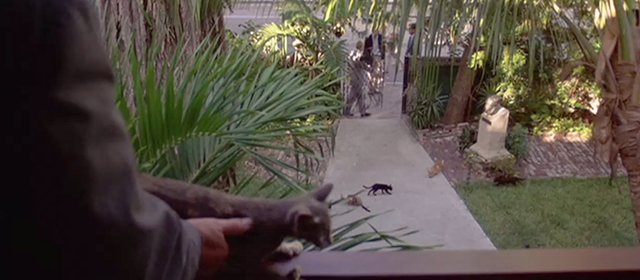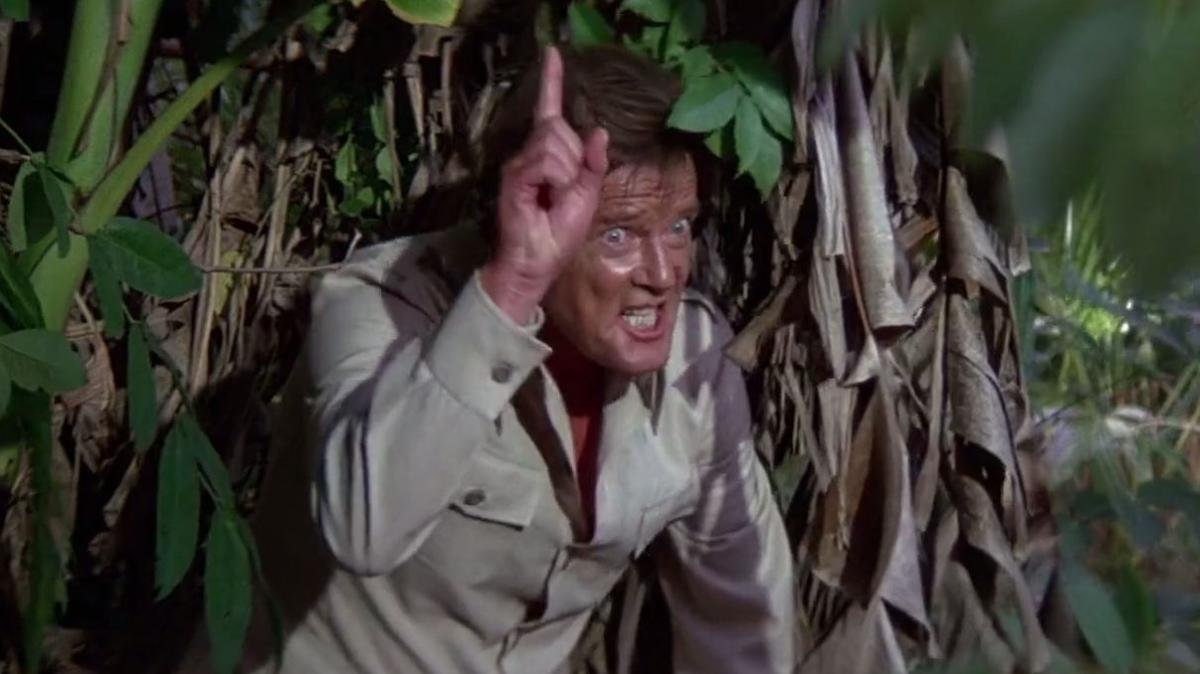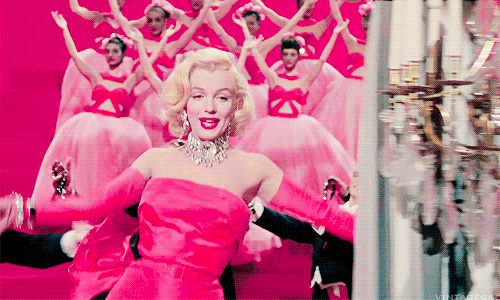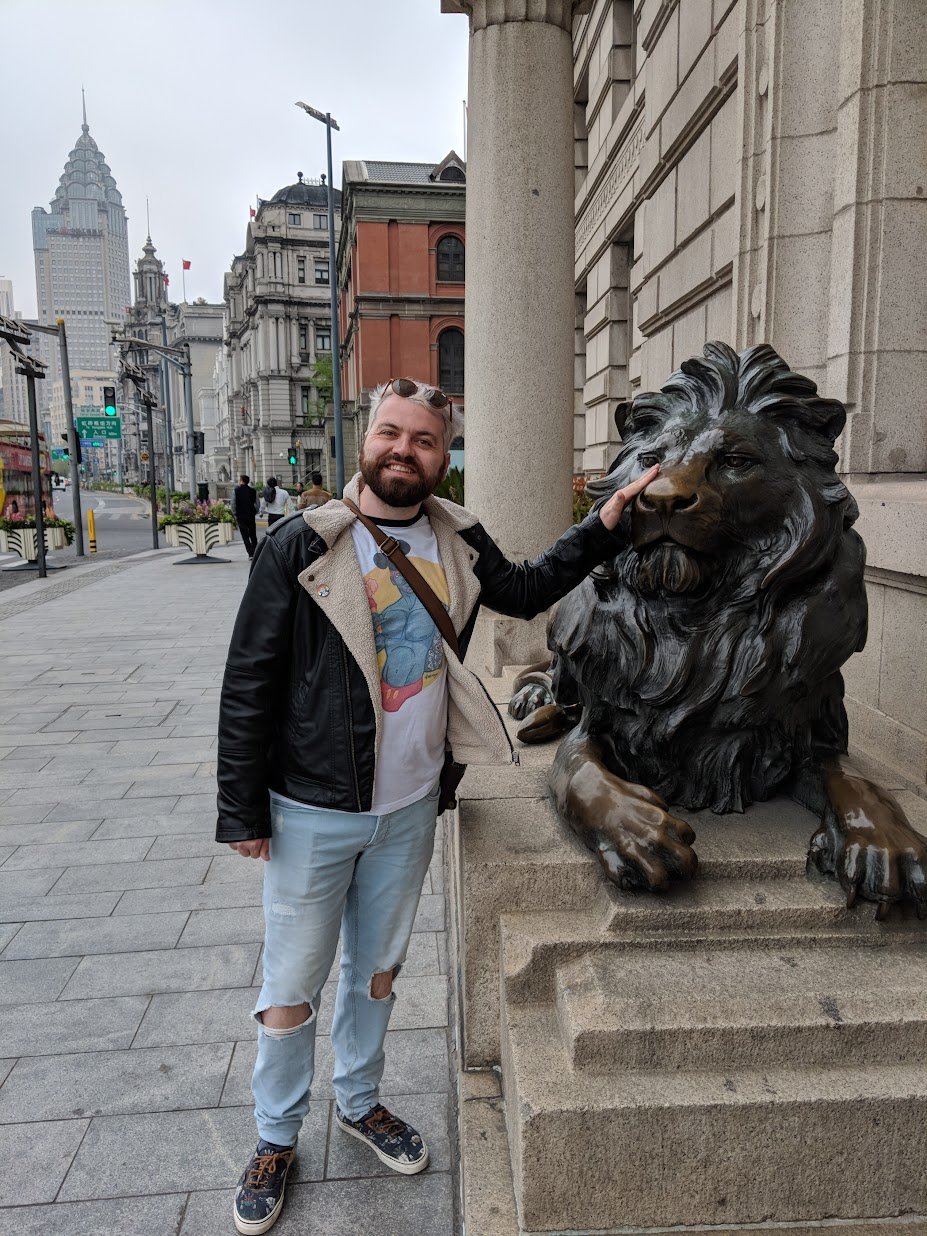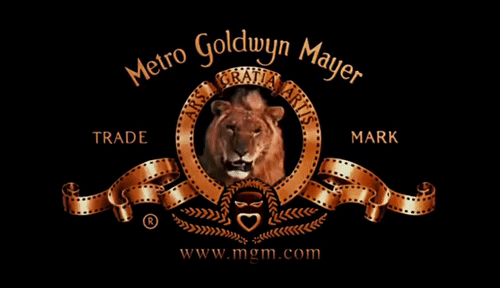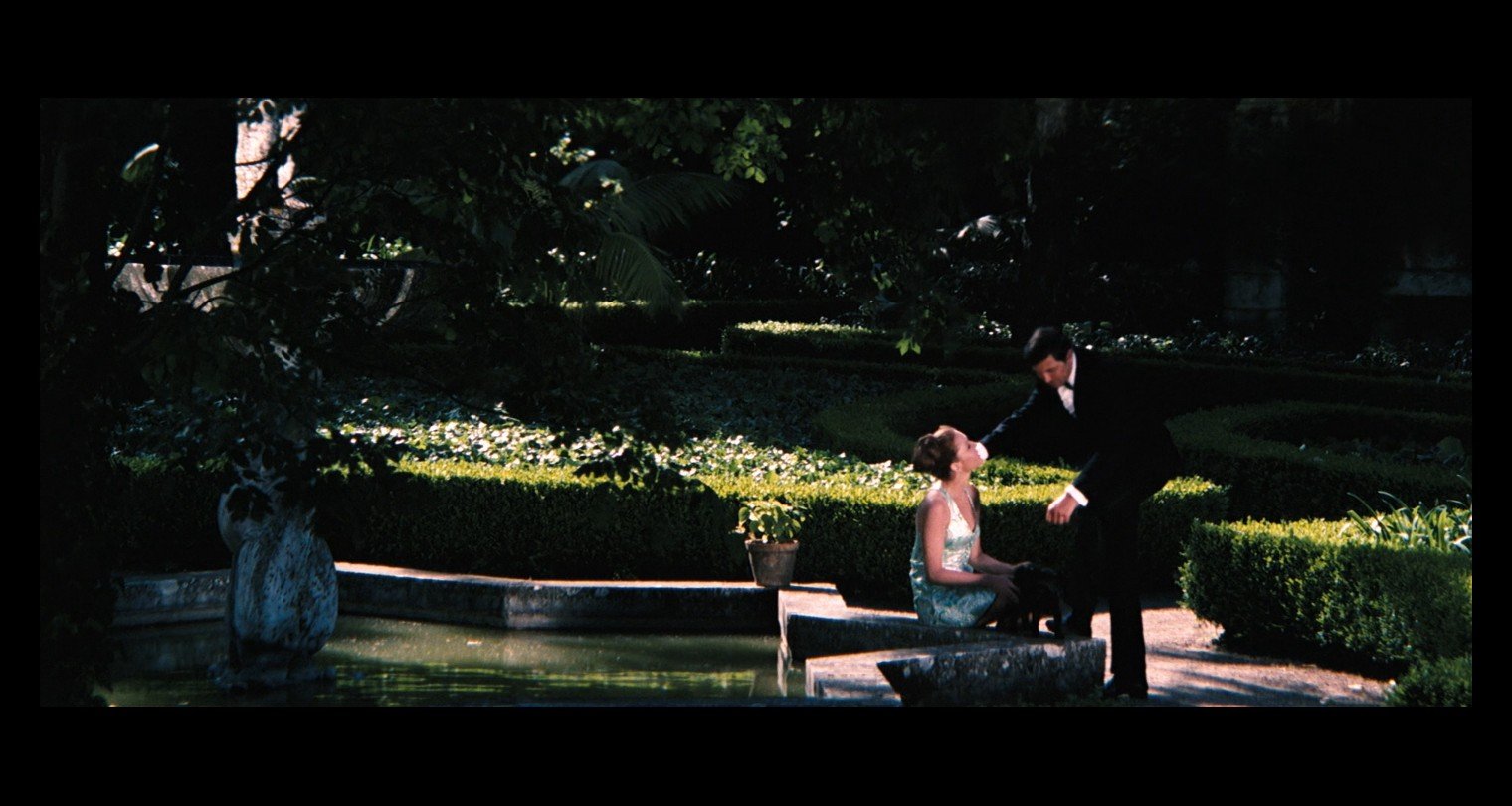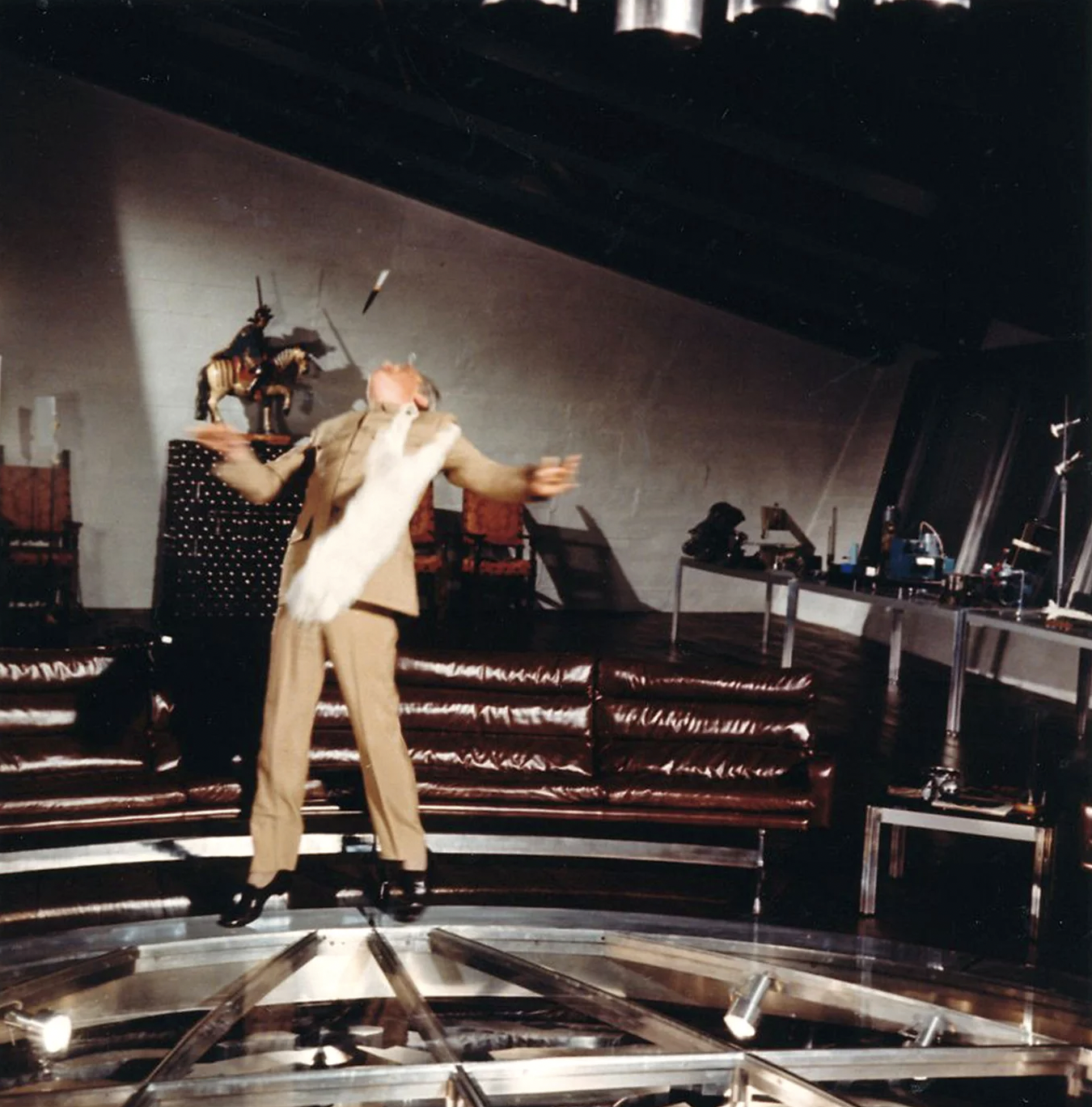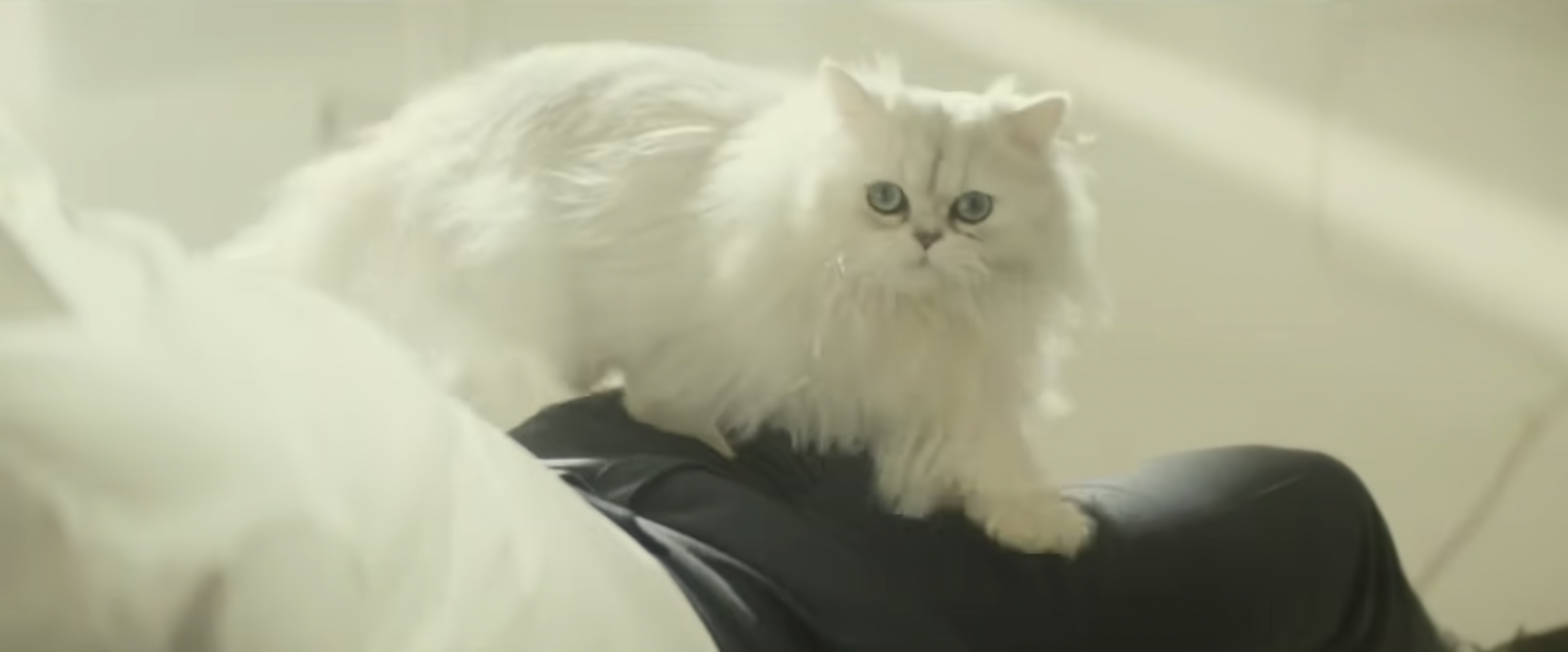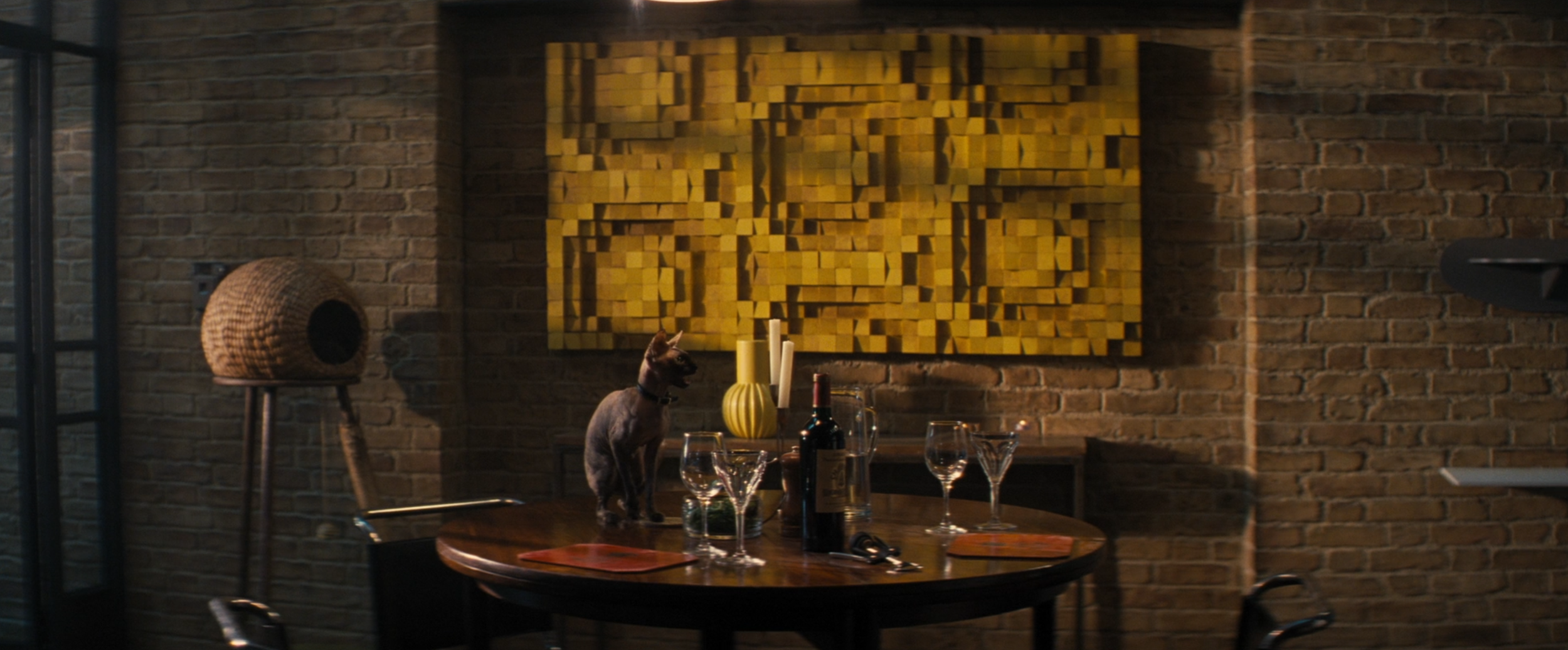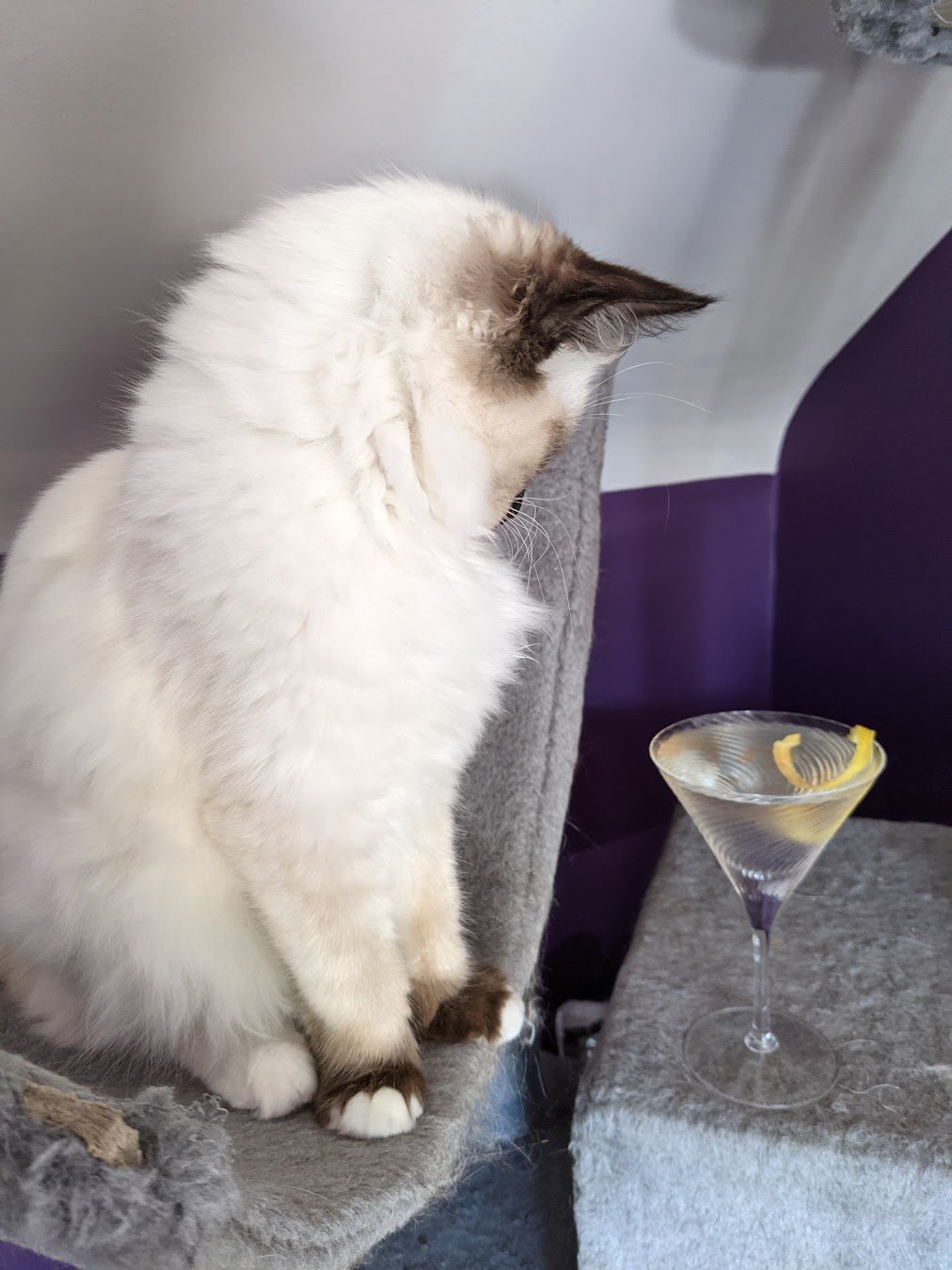Look what the cat dragged in: is the world ready for a more feline James Bond?
More than shifting his gender or sexual orientation, surely the boldest way to reinvent Bond would be to make him care for something other than himself. A cat, perhaps? After looking back over 70 years of books and films, I’m convinced the idea has legs (four of them).
This article is available as podcast, wherever you get podcasts.
Is James Bond more of a dog person or does he prefer cats? Is the character himself more like a cat or a dog? Do the Bond books and films reinforce stereotypes associated with these animals or subvert them? What do people’s pet preferences say about other aspects of themselves?
These are the kinds of profound questions that keep me awake at night.
Even when I have plenty of far more pressing concerns in my life, these pet-related problems are persistent nocturnal visitors, popping into my brain with alarming frequency at around 4am. Perhaps not coincidentally, this is usually the time when my own cats decide it’s time to get up and start clawing my arms, feet, face or any other exposed bit of flesh in the hope that I will get up and feed them.
I capitulate of course, and having soporifically filled three cat bowls - spilling half the contents but sating my felines’ craving for feasting on warm human flesh (specifically: mine) - I return to bed, desperate to return to sleep. But then the real ruminations begin.
I examine the evidence, drowsily replaying snippets of scenes from Bond films in my mind: loosely connected moments where dogs and cats feature in shots or in dialogue, one free associating with another…
Alec Trevelyan in GoldenEye sneering at Bond’s loyalty, equating him with one of the Queen’s dogs (“Her Majesty’s loyal terrier”).
That then sparks a memory of Bond glancing down at one of the Queen’s corgis as he escorts Her Majesty to her helicopter so she can land in style at the 2012 Olympics.
That leads onto: a landing of a less happy kind as Bond forever earns the enmity of the RSPCA by launching Blofeld’s ‘wrong pussy’ into the air in Diamonds Are Forever.
And then: The audience being wrong-footed into thinking we’re about to encounter a villain in Licence To Kill but soon discovering it’s M who surrounded by cats, in the house of cat-lover Ernest Hemingway no less.
Next up: Another vaguely animal-related M encounter, this time in Thunderball. When Bond is redirected from M’s office to the conference room by Moneypenny he tells her that every Double-0 in Europe has been rushed in because “Someone’s probably lost a dog”.
Cut to: Roger Moore mixing up dogs and cats by using dog-training commands to tame a big cat (“Sit!”) while escaping from Kamal Khan though the jungle.
And: Irina being told to “take a hike” by Zukovsky after Bond asks “who’s strangling the cat?”
It goes on and on in my head…
James Bond: pet owner?
With the Bond film producers announcing that the next Bond will be a “reinvention”, it strikes me that this is the opportunity to finally give him a pet. Bond himself has had way more than nine lives. Alan J. Porter has identified no fewer than 28 different incarnations of the character, each with their own chronology and continuity, and not one of them has been a pet owner. Why not?
Perhaps it’s wise that the various screenwriters and novelists over the last seven decades have resisted giving James Bond an animal to care for. With his globe-trotting lifestyle, any animal unfortunate enough to live under the roof of his bachelor pad would not only be starved of affection, but also, unless his housekeeper was very diligent, food. It would not stay living for long. 007’s pet would have a shorter life expectancy than your average Double-0 agent.
Prosaically pragmatic concerns like this aside, what makes it unlikely that anyone would ever dare to give Bond a pet to care for is the character’s supposedly unnurturing nature. When briefly giving him a child was considered a mistake by some, would the producers ever be brave enough to repeat the experiment by making him an owner of a dog or a cat?
Daniel Craig with his cat Solomon
If I had any say in the matter, I’d voice my preference for a cat. It just seems to fit, especially for a character named after a bird-watcher.
But might there be a fear that making Bond a cat dad would threaten his masculine image?
In 2019, the largest cats’ welfare charity in the UK, Cats Protection, conducted research which revealed that “men who like dogs are still seen as more masculine than those who like cats, but we want to put an end to this misconception.”
They asked 2000 men “to assign attributes to a man in two photos – one with a cat and one with a dog. The man with the dog was more likely to be seen as masculine whereas the man with the cat was more likely to be seen as sensitive.”
Dogs more typically embody masculine qualities, such as strength and loyalty, which is probably why Superman and Batman have dogs (Krypto and Ace the Bat-Hound, respectively).
Cats carry more feminine connotations. Merriam-Webster’s dictionary states that you can use the adjective ‘feline’ to describe anything which is cat-like because it is “sleekly graceful”, “sly, treacherous” or “stealthy”. Sounds rather like James Bond to me, but then, as a Cat Person myself, I am biased. Because you could just as justifiably say that Bond, loyal to Queen and Country, is as much ‘canine’ as he is feline.
But before we commit ourselves, it’s worth looking at where these associations of cats and dogs come from and the extent to which they are fixed.
“Girl’s best friend”
During the briefing scene of Diamonds Are Forever, when Bond is asked by M how far his expertise extends into the field of diamonds, he reels off the little he knows about the stones and their socio-cultural associations:
“Hardest substance found in nature. They cut glass. Suggest marriage. They've replaced a dog as a girl's best friend. That's about it.”
Cattily, M replies that it’s “Refreshing to hear there's one subject you're not an expert on.”
And M would appear to be correct. There is little evidence to suggest that dogs were ever considered a ‘girl’s best friend’ before being supplanted by diamonds at some point. The phrase ‘diamonds are a girl’s best friend’ originates with the song of this name, famously performed by Marilyn Monroe in 1953’s Gentlemen Prefer Blondes.
By subverting the popular phrase ‘a dog is a man’s best friend’, the lyricists cleverly characterise Monroe’s character as someone who prizes material goods (diamonds) over loyalty (dogs). By extension, it positions all women as gold/diamond diggers. Aptly, Diamonds Are Forever features two of them: Plenty O’Toole and Tiffany Case.
There’s more than an uncleaned cat tray-whiff of misogyny about all this of course. The idea that loyalty is more of a masculine value has been around for centuries, even millennia, as has the notion that dogs are prized by men for exhibiting loyalty. When a disguised Odysseus (a model for Bond in several significant ways) returns home from his 20 year globe-trotting mission in Homer’s epic poem The Odyssey, the only living thing that recognises him is his dog, Argos. His wife and child are clueless.
In 1764, Enlightenment thinker and writer Voltaire codified the idea that dogs are closer to men than wives and children in his Philosophical Dictionary. Under the entry for ‘dog’ he reflected the attitude of his day:
“Of all the animals it is the most faithful: it is the best friend man can possibly have.”
While it’s possible Voltaire was using ‘man’ in its generic sense, not marked for gender (as we do in English with ‘mankind’, referring to both men and women), he does so without the capital letter (‘Homme’), which would be typical in French when referring to humanity in general. Other recorded uses of the sentiment in Voltaire’s time and since have almost exclusively reinforced the bond between dogs and men, omitting women.
There’s a relatively clear cut association between dogs and masculine qualities in European cultures. This is not necessarily the case in other parts of the world. In China, for instance, stone statues of big cats fiercely guard the entrances to buildings. Tellingly, these lions are often misidentified as dogs by European onlookers and incorrectly translated as ‘guardian dogs’ into English. It’s as if the European mind couldn’t conceive of cats - even very big cats - being strong enough (or bothered enough) to protect temples, banks and public offices.
Famously, cats were put on a pedestal in Ancient Egypt, quite literally in the case of goddesses such as Bastet, who in statue-form is most frequently depicted as a lioness fiercely protecting her cubs.
Of course, the Bond films have done their bit to make cats pre-eminent too: prior to many of the gunbarrels, Leo the lion, the famous emblem of the studio MGM, is the first thing we see.
Wrong pussies: villains’ cats
In the world of Bond, cats are synonyous with Blofeld, male in every incarnation, albeit queerly so: from the asexually coded figure of Fleming’s novels to the shady scene-stealer of Diamonds Are Forever and beyond.
Although Blofeld never has a cat in the books, it was a masterstroke to not show Blofeld’s face in the film adaptation of From Russia With Love but his cat’s instead. It wouldn’t have succeeded if we’d not had a suitably calculating visage to gaze upon as Blofeld outlines the machinations of SPECTRE and sets up the entire plot. Fortunately, the white cat they cast is more than up to the task. Terence Young coaxed a great performance from the furry demon. Being very familiar with the uncooperativeness of cats myself, I’m just as inclined to credit Peter Hunt with the success of the sequence as it must have been a nightmare to edit together! Who knows how many takes - and snacks of fatigued Siamese fighting fish - were required to just get the cat to sit still, let alone act to order. Somewhere in the Eon vault there must be a sizeable quantity of cat outtakes.
In its first appearance, the cat is used to great illustrative effect, as a stand-in for not just Blofeld but also SPECTRE, patiently pitting enemies against each other before waiting to strike. It’s a superb metaphor. The cat has less to do in Thunderball - merely jogging our memories of who Blofeld is - before resuming a starring role in You Only Live Twice. When the volcano base starts exploding, the cat is suitably alarmed, almost tearing off Blofeld’s arm. It’s a blink and you’ll miss it moment, but one you can’t unsee once you’ve seen it.
With Blofeld’s voice, appearance and demeanour changing on a film-to-film basis, the white cat provides some continuity and helps us to instantly identify the character. Whether Blofeld has a Persian or a Turkish Angora depends on the source you’re reading. Even as a cat lover, I struggle to tell the difference between the breeds.
Appearing in only a couple of shots in On Her Majesty’s Secret Service, Blofeld’s white cat is upstaged by the black cat who is petted by both Bond and Tracy in the ‘We Have All The Time In The World’ falling-in-love montage. This has always struck me as the pivotal moment in the sequence, the cat being a manifestation of Bond’s and Tracy’s masculine/feminine energies coming together in harmony.
Less harmoniously, in Diamonds Are Forever Bond launches a cat through the air in the hope that it will head straight for the real Blofeld. Unbeknownst to Bond, until it’s too late, there are two cats. That the kicked cat goes for the clone Blofeld instead suggests that the clone has his own cat that he has bonded with. Was this a contractual obligation when the chap signed up to work for Blofeld? Blofeld blames Bond for his recruitment issues, saying that 007’s propensity for killing his clones has put off potential applicants. But perhaps Blofeld overestimated the extent to which henchmen might think a free cat would be suitable compensation for forever altering their appearance.
Incidentally, for the benefit of those who have never owned a cat, this is NOT how cats work. They may be a great source of comfort but they CANNOT change their course in midair. What WAS Bond thinking?!
Contrast Bond’s treatment of a cat here with his more affectionate treatment in On Her Majesty’s Secret Service, only two years before. Brutalising Blofeld’s pussy shows Bond turning his back on any kind of feminising influence, the 70s being a reactionary period in the Bond series, with Bond himself becoming regressively more hypermasculine.
I’d rather not think too much about the fates of Blofeld’s furry babies. A doting cat dad Blofeld may be when things are going to plan, but he never prioritises his cats’ wellbeing when things start exploding around him. Mind you, the inside of a bathosub looks pretty snug as it is and being trapped in such a confined space for any period of time with a scared cat is no one’s idea of a good time. At least the cat jumps off when Bond drops the wheelchair-bound Blofeld-alike villain down a chimney in For Your Eyes Only. This represents a generous move on the part of the producers who were seeking to ‘kill off’ Blofeld ahead of his appearance in the rival production Never Say Never Again. Perhaps Bond killing a cat would just make him appear unnecessarily cruel and animal-loving director John Glen would not have stood for it.
The cat returns
When the rights to use Blofeld were re-acquired by Eon, his cat came with him. In a brief appearance, the cat appeared to defect to Bond, jumping up on his lap as he was tortured by his evil stepbrother. So synonymous is a white cat with Blofeld that the cat gets his close up (looking directly to camera) just before Franz Oberhauser reveals his new appellation. The cat is used to cue our memories of Blofeld, preparing us for the revelation before it emerges from his lips. Distressingly for feline fans, the cat is nowhere to be seen in the escape sequence that follows. When I watch this scene I’m so worried about the cat that I don’t pay attention to the World Record Breaking explosion. I always hope to see a white flash running into the desert, escaping the fiery conflagration in the nick of time.
Tom Mason, lecturer in Film Theory and History at Newcastle University, has unearthed a great many treasures in the Eon archives. Although this does not, as yet, extend to a reel of cat outtakes, he has found a tantalising cat-related detail in the Richard Maibaum script for Diamonds Are Forever. In this very different conception of the film, Bond and Blofeld have their showdown in a jungle, stalking each other through the trees until Blofeld is killed by a tiger. This, the screenplay tells us, is “poetic justice” because Blofeld “adores cats”.
Not every villain is quite so fond of cats. One of the most disturbing sequences in any Bond novel, particularly for cat lovers, is the scene where Goldfinger gives his ginger tom to Oddjob for his dinner. He does so to unsettle Bond: it’s a thinly-veiled threat to Bond himself, who has used the cat as an alibi after sneaking around Goldfinger’s house and being filmed doing so. Bond pins the blame for exposing the film on the cat and it’s the cat who pays the ultimate price. Our sympathies are aligned with Bond’s: we are intended to be horrified.
Goldfinger himself compares Bond with a cat, as he does Tilly Masterson, after they are both captured:
“You must now pay for the inquisitiveness which your attack upon me proves, as I suspected, to be inimical. Curiosity, as they say, killed the cat. This time it will have to kill two cats, for I fear I must also count this girl an enemy.”
In Goldfinger’s conception, curiosity is both a masculine and feminine quality.
It may have been Fleming’s plan - or a neat coincidence - that a Pussy outlives Goldfinger, providing a degree of poetic justice. Although the book’s Pussy Galore is not instrumental in thwarting the villain’s plot like the film’s character played by Honor Blackman, she does switch sides at the last moment. She leads a group of fellow lesbians, originally forming a trapeze act called Pussy Galore and her Abrocats, but who now operate as “cat burglars”. Pussy’s conversion to Good Girl is reflected in her straightening out in another sense, falling for the charms of Bond, despite her avowed lesbianism.
“They come with fur these days”
Before Ben Whishaw’s Q was outed as queer in No Time To Die, he was coded as such in Skyfall and Spectre. In the latter, when worried about his job security, Q tells Bond he has a “mortgage and two cats to feed”. Would our gaydars have pinged quite so loudly had he mentioned having two dogs? I doubt it. Gay and bisexual men cannot escape the stereotype that they are inherently more feminine. Giving Q dogs may have put viewers off the scent. As it was, fan art showing Bond and Q in a relationship, complete with feline company, surfaced years before No Time To Die was released, confirming what we suspected all along.
When we finally meets Q’s cats, we find out they are Sphynxes, the same breed as Mr Bigglesworth, the cat belonging to Blofeld-parody Dr Evil in the Austin Powers series (although it’s a very hairy Persian before something goes wrong with the cryogenic freezing process). Bond cannot resist quipping that "You know, they come with fur these days?" As is well-established (and observed by villain Gustav Graves in Die Another Day), Bond uses humour as a defence mechanism. Fans of #00Q might be inclined take his making a joke about Q’s cats, rather than complimenting him on them, as further evidence that Bond might be concealing his true feelings for his quartermaster.
Fleming’s felines
“He moves like a panther,” Dana Broccoli said of Sean Connery, putting forward the case to her husband for why he should be cast as Bond. Had she been reading Fleming too?
Fleming frequently gives his characters cat-like movements in moments of great tension, regardless of their gender or whether they are heroes or villains. In Moonraker, Gala Brand is described as moving like a cat, but so is Bond. After redirecting Drax’s missile away from London, Bond retreats into cover with a “cat-like scurry.” When facing off against Mr Kidd in the finale, we are told “Bond stayed tense as a stalking cat.” In The Man With The Golden Gun, homosexually-coded Scaramanga has “cat-like menace” and, in the showdown with Bond, moves like “a swift cat”. For his part, after being injured and jumping off Scaramanga’s train, Bond is “as sick as a cat.” In the short story Risico, Bond leaps twelve feet from a boat to a jetty and lands “like a cat, on his hands and toes”.
It’s not just action Fleming associates cats with though; sometimes it’s inaction. Fleming uses cats themselves to establish the calm before a storm or an eerie quiet - and sometimes both. After the populace of Fort Knox has supposedly been gassed to death, we are informed that:
“Not a cat moved, not a sound came out of the crowded buildings that formed a backdrop to the scene.”
Similarly, In From Russia With Love, Fleming uses a cat to establish a calm, subdued atmosphere just prior to the frantic fight of the ‘gipsy’ girls:
“A black cat with green eyes walked slowly across the terrazza and joined a group of children who were sitting quietly as if someone was about to come on to the dance floor and teach them a lesson. It sat down and began licking its chest.”
A couple of chapters later, when Bond and Kerim are on their way to assassinate the man who attempted to kill Kerim, Fleming uses the absence of a cat to unsettle Bond and the reader:
“There was not a soul in sight, not a cat, and Bond was glad he was not walking alone down this long street...”
Even a cat would provide some comfort to Bond. It’s an endearing moment of vulnerability we can all relate to.
The fighting ‘gipsy’ girls themselves are described as “spitting and fighting like angry cats”, a comparison Fleming sustains through the sequence:
“The thud of the big girl's fall shook the ground. For a moment she lay still. With an animal snarl, Vida dived on top of her, clawing and tearing. My God, what a hell-cat, thought Bond… The girls tore apart and backed away like cats…”
“Hell-cat” may sound like it’s marked for gender, but Fleming uses it in The Spy Who Loved Me to describe the male gangsters menacing Bond and the heroine, Vivienne Michel:
“They'll be pretty desperate to get away. But they've somehow got to kill us first. They're in a nasty fix and they'll fight like hell-cats.”
Early in the novel, Michel chastises herself for being a “Scaredy Cat” during a lightning storm before finding banal comfort in a TV commercial “about cats and how they loved Pussy-foot Prime Liver Meal”.
Pussy-footing around
Although the ‘gipsy’ girl fight in From Russia, With Love is very sexualised, Fleming rarely uses cat analogies when describing sex acts themselves. One exception is when writing from the point of view of a woman, in The Spy Who Loved Me. When thinking back to a former boyfriend, Michel recalls “sex without involvement or danger... which each time left me sleek and glowing like a pampered cat.”
A more oblique reference to sexually-active women as cats appears in On Her Majesty’s Secret Service. After having sex with Tracy and sneaking back to his own room, Bond lies awake pondering why Tracy cried herself to sleep afterwards. It doesn’t perturb him for too long. He shrugs it off by telling himself “All cats are grey in the dark”. In other words, sex is enjoyable regardless of what the partner looks like or the situation. As it’s been established already that Tracy is physically attractive, we’re left to conclude that Bond isn’t losing much sleep over having sex with someone who is emotionally unstable. An English translation of an old French idiom (‘la nuit, tous les chats sont gris’), this is considered vulgar by many nowadays. While, it could be used - a tad problematically - by people of any gender, it’s more commonly been used by men referring to female partners, and often with an intended sexual meaning. The French ‘Chat’ carries sexual connotations just as ‘cat’ does in English.
Artwork by Fay Dalton for the Folio Society edition (their copyright).
Fleming’s most explicitly plays with the association of cats and female genitalia in You Only Live Twice. Wearing only a black triangle of material between her legs, Kissy tells Bond to "Stop looking at my black cat!”. When Bond asks, "Why is it called that?" she tells him to "Guess!"
The connection is there in the films too, through their cunning use of innuendo. Vying for the title of Least Subtle Example are two moments. The first is Sean’s “I must be dreaming” when Ms Galore reveals her full name. The second is Roger’s reaction when Magda tells him the tattoo he’s enquired about is “Just my little Octopussy”.
The most literal visual representation is during the titles of Diamonds Are Forever, with a persian emerging from between the legs of one of the scantily clad women. Yes, we get the idea Mr Binder!
Old dog, new tricks?
I suspect that many of those who feel change is anathema to the Bond character, those finding an idea of a ‘reinvention’ unnecessary, prefer dogs over cats. Cats are more capricious and unpredictable. Dogs are more steadfast. Bond is both. While there are certain core qualities to the character, he must keep moving to survive, which is also a truism of the franchise as a whole. You don’t need to wait for a new Bond actor to take on the role for there to be a significant shift. Take the Craig era as the example.
Skyfall marked the point where Bond become more dog-like.
While it would be a stretch to say dogs themselves are a ‘theme’ of Skyfall, they are employed, in several key scenes, to bring to the surface the ‘tradition vs. progression’ tension that permeates the film. Should Bond’s dislike of M’s bulldog paperweight be attributed to its aesthetics or what it represents?
The Royal Doulton doggy carries connotations of domesticity and being settled; a job where a paperweight would be required would be a slow death to someone addicted to living on the edge. Bond is more agile and adaptable than a dog, especially during the reign of Judi Dench’s M, where he regularly slipped the leash. For much of Skyfall, Bond is in flux, torn between rebelling against authority and playing by the book. Eve Moneypenny helps to effect his return to something more traditional, explicitly comparing Bond with a dog.
Despite Bond going on to demonstrate that he’s capable of ‘new tricks’, at the end of Skyfall, there’s a feeling of a dog returning home to his wood-pannelled kennel, called to heel by his male master, Mallory. His wilful cat-like qualities, on display throughout the matriarchal Casino Royale and Quantum of Solace, have been constrained, at least for a short while.
It’s worth noting he ‘goes rogue’ in Mexico at the start of Spectre only at the bequeathed behest of the deceased female M. Bond keeps the Bulldog around to remind him to never get stuck behind a desk. He may be Her Majesty’s (and M’s) loyal terrier, but he will never be tethered entirely.
Another reinvention occurs across Roger Moore’s films, the final transformation quietly signified by a sleepy cat.
Those who prefer Moore’s earlier Bond films, with him bedding everyone within seconds, may be irked to see the Bond of A View To A Kill waking up not in Stacey Sutton’s bed but with her Pussy in his lap (we glean the rather unimaginative name of Stacey’s cat from their food bowl).
This is a far kinder, less hypermasculine Bond than the one we experienced in the first half of Moore’s tenure. This Bond is just as comfortable making a quiche as being a bed for a kitty. Bond has done the gallant thing and not slept with a frightened and vulnerable woman. Compare this with the “all cats are grey in the dark” Bond of Fleming’s On Her Majesty’s Secret Service. This is a Bond whose masculinity has been modified to fit the times. Bond’s culinary dabbling is a reference to future Bond scribe Bruce Feirstein’s book, Real Men Don’t Eat Quiche, an attack on outmoded models of masculinity. Giving Bond a cat to care for was probably the idea of animal-loving director John Glen. Like the quiche-making, it subtly shifts our idea of what kind of a man Bond is.
You only get a hairball twice
Off the back of their 2019 research into the stigma associated with men becoming cat dads, the Cats Protection charity started a campaign to smash stereotypes. In an article entitled Cats should be a man’s best friend they identified several compelling reasons why men should own cats. They included: “Cats can fit around your busy lifestyle”; “Cats can help you chill out” and “Cats can help you get a date”. All of these are reasons why a cat would be the ideal pet for Bond. While he rarely needs help getting a date, he does have a busy lifestyle and is in urgent need of chilling out (constantly skirting the borders of alcoholism is not a hobby, 007!).
But what would Fleming have thought of the idea?
A oft-heard argument against making changes to the Bond character is ‘this isn’t what Fleming intended’. It’s a line more often than not trotted out by those who have not even read the books and have a miasmic sense of the character as a ruthless, unfeeling killing machine. Anyone who has read the books knows that this is far from the truth. Personally, I’m looking forward to the Bond film in which Bond, true to Fleming, calls someone he cares for a “silly goose”. I don’t see it happening anytime soon, but we will see!
Far more likely is Bond either becoming a cat dad or, true to Fleming, 007 being presented in more explicitly cat-like fashion himself. If you find that hard to stomach, just take another look back at Fleming.
In Fleming’s Dr. No, when Bond petulantly seethes with resentment at M taking away his favourite gun before he embarks on his latest mission, we are told his anger is “balling up inside him like cats' fur”. Charmingly bizarre as this description is, it’s not even a one off event! In On Her Majesty’s Secret Service, when Bond is counting down to his nighttime escape from Piz Gloria, Fleming tells us he “felt the excitement ball up inside him like cat's fur.”
Bond’s creator kept dogs at his Jamaica home, but many of his literary contempraries loved cats. The self-consciously hypermasculine Ernest Hemingway allowed cats to have the run of his Key West house (the one turned into an MI6 outpost in Licence To Kill). And Fleming’s friend Raymond Chandler wrote his hardboiled noir fiction in the company of his beloved black persian. Perhaps these men sought the solace of cats to counterbalance the brutish masculinity of their writing.
Although Bond has been long saddled with the responsibility of being the ‘ultimate man’ by those who give him no more than a cursory glance, true aficionados know that Bond queers the gender binary, embodying both masculine and feminine qualities. In this light, giving him a cat doesn’t appear to be too big of an ask.
So, are my 4am conundra resolved?
Far from it. I have no doubt ‘Bond + cats’ will continue to trend in my pre-dawn ruminations. They remain Sphinx-like riddles (or should that be Sphynx-like?).
One question only leads on to more questions. Such as, if Bond had a cat, what would they be called?
Personally, I think Bond would want to name his cat after someone who means a lot to him, but do so with a cheeky nudge and a wink, so if someone questioned him about being a cat dad he could conceal his insecurity about owning a ‘feminine’ pet with a quip.
Felix Litter, perhaps?
Notes and acknowledgements
I have been writing parts of this article on and off for over a year. I finally brought it all together into something which I hope is coherent and fun to read, even if you don’t like cats very much.
Thank you to Jill Leflour for his assistance with French translation.
Thank you to Tom Mason for sharing with me his resarch into the early scripts of Diamonds Are Forever.
Certain images taken from Thunderballs: https://www.thunderballs.org/
For those who want to read more, I have provided hyperlinks throughout the article to my sources. I found the following website helpful in checking certain cat-related facts:
Cinema Cats (2022) Cinema Cats: Celebrating Cats in Movies and Television Available at: https://cinemacats.com/
On a couple of occasions, I have used the word ‘gipsy’, quoting Fleming. This is a hightly contentious term nowadays: https://mindfulmermaid.com/stopsayinggypsy/
Anyone who would like to hear what happened in an alternate universe when Charles Gray’s Blofeld DID take his cats with him in the bathosub at the end of Diamonds Are Forever might want to listen to my appeareance as the character on Jack Lugo’s Bond and Banter podcast: https://podcasts.apple.com/gb/podcast/ernst-stavro-blofeld-david-lowbridge-ellis/id1554162563?i=1000512416796
This article is dedicted to my own cat babies: Daken Roger Moore Lowbridge-Ellis (to use his full name), Wyatt Lowbridge-Ellis and Vesper Lowbridge-Ellis.


